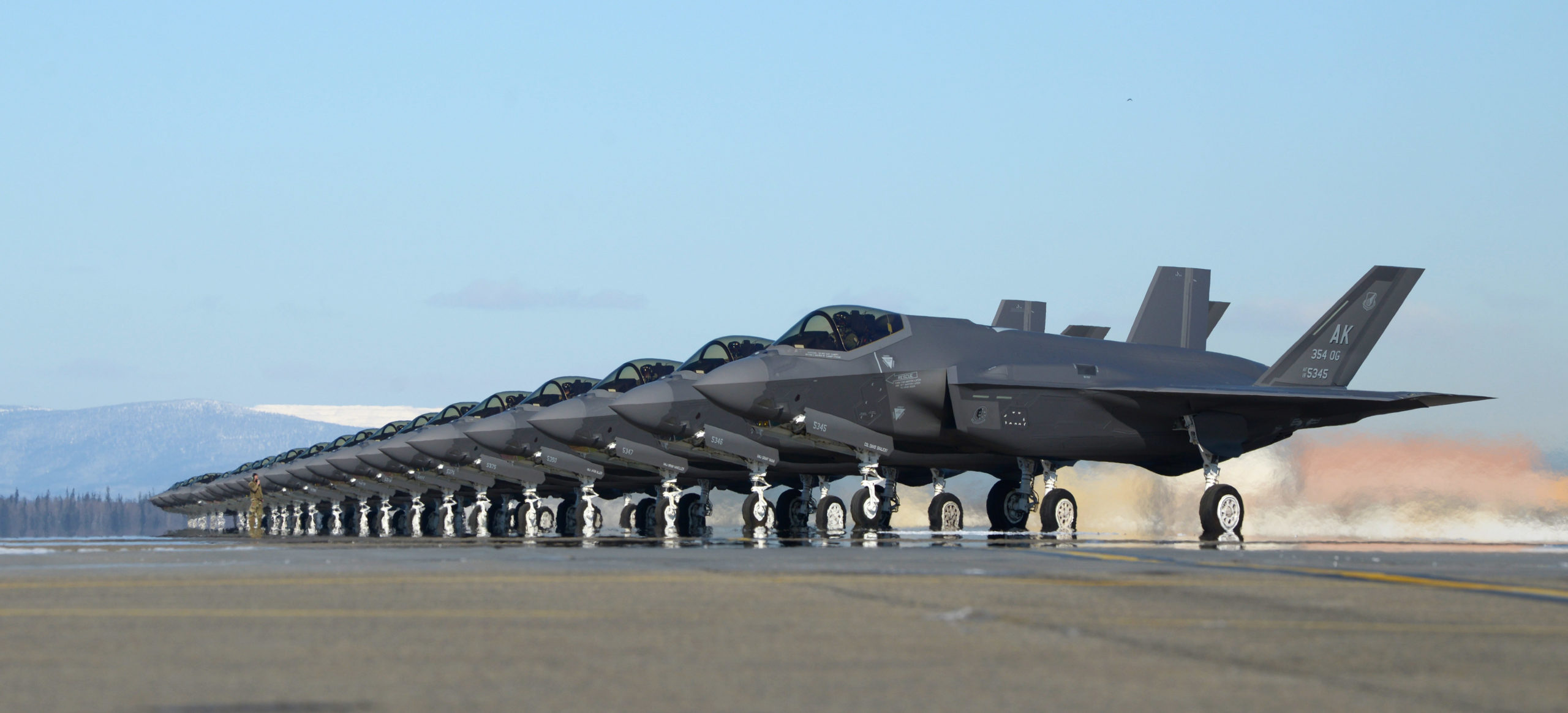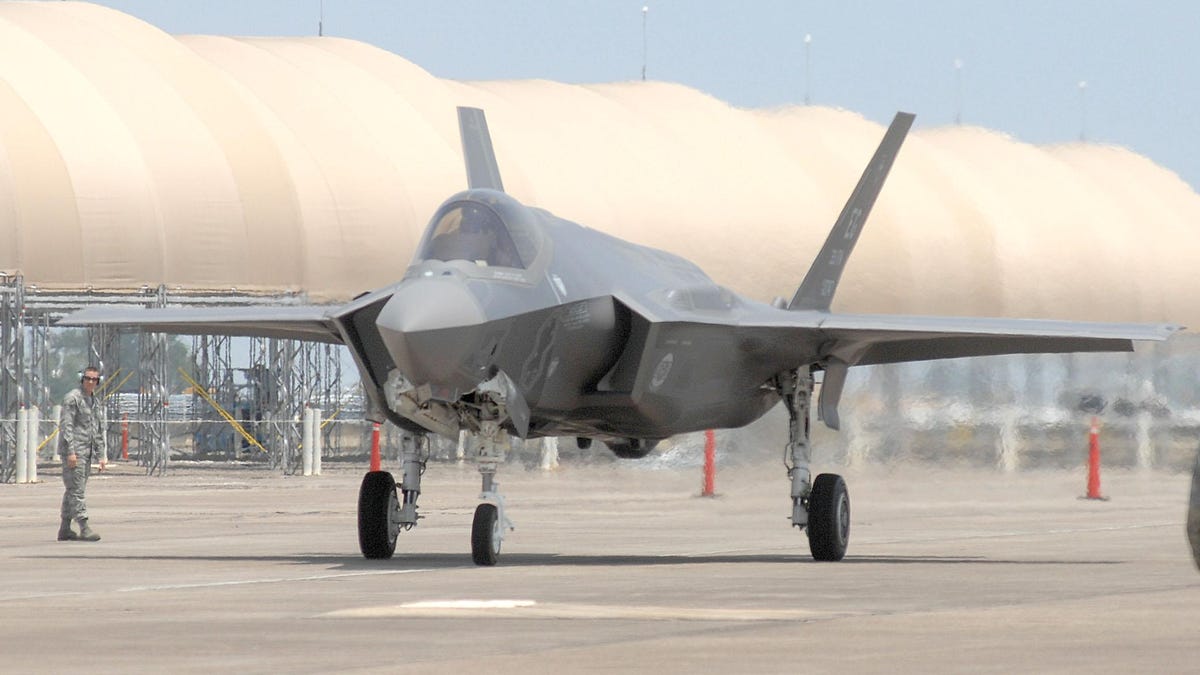DOD says local F-35 software facility at Eglin Air Force Base falling short
Jim Thompson Northwest Florida Daily News Apr.8, 2021
EGLIN AFB — The F-35 Joint Program Office (JPO), a combined group of civilian and Air Force and Navy uniformed personnel overseeing the ongoing development of the F-35 stealth fighter jet, has come under criticism from the Department of Defense (DoD) for apparent deficiencies at an F-35 software laboratory at Eglin Air Force Base.
In a January report, the DoD's office of the Director, Operational Test & Evaluation (DOT&E), which oversees major defense acquisition programs, indicated that the F-35 Lightning II United States Reprogramming Laboratory (USRL) is falling short in its mission of testing and improving software essential for the fifth-generation stealth fighter jet.
Among other responsibilities, DOT&E works to ensure testing is adequate to prove the effectiveness of equipment like the F-35 in a combat environment. In its annual report on testing and evaluation in 2019-20 fiscal year, the DOT&E says the USRL is not able to adequately test and improve the F-35s mission data files.
Those files, also known as mission data loads (MDLs), provide the fighter jet with the ability to search for and identify hostile targets, and to distinguish those signals from friendly signals. The MDLs are "essential to F-35 mission capability," according to the DOT&E report.
The report further notes that the USRL — which has operated for more than a decade at Eglin and is staffed with a combination of military, civilian and contractor personnel — "still lacks adequate equipment to be able to test and optimize MDLs under conditions stressing enough to ensure adequate performance against current and future threats in near-peer (adversaries such as China and Russia) combat environments."
Additionally, the F-35 JPO "recently reduced or eliminated funding support for flight testing of new MDLs, essentially reducing testing to inadequate laboratory venues only," according to the report.
Going on to note that the mission data loads are "essential to F-35 mission capability," the report insists that the U.S. military "must have a reprogramming lab that is capable of rapidly creating, testing, and optimizing MDLs, as well as verifying their functionality under stressing conditions representative of real-world scenarios."
Among the recommendations in the report, the office calls for obtaining "adequate funding to develop and sustain robust laboratory and simulation environments." The report also calls for ensuring "adequate lab infrastructure" to meet timelines for the operational requirements for the latest F-35s and the fighter program's Continuous Capability Development & Delivery strategy.
Questions for F-35 JPO linger over report
Additionally, the report noted that cybersecurity testing connected with the F-35 program has "identified vulnerabilities that must be addressed" to ensure secure operation of the U.S. Reprogramming Laboratory.
Some days ago, the Daily News presented the Joint Program Office with a list of questions via email about the shortfalls noted in the DOT&E report.
Among the half-dozen questions submitted to the JPO were inquiries regarding why the JPO decided to reduce flight testing of mission data loads; what the JPO was doing, if anything, to increase the rigor of testing those MDLs; and what was being done, if anything, to improve the USRL.
A Joint Program Office spokeswoman emailed the Daily News on Friday to say that the JPO is "still working on the more detailed information" sought in the admittedly very specific questions from the newspaper and was "close to having something" in response to those questions.
As an interim response to the Daily News queries, the JPO noted in an on-the-record segment of the spokeswoman's email that the DOT&E report was "completed with the JPO’s full cooperation, including providing DOT&E with access to detailed program data and information."
The email added that issues noted in the DOT&E report "are being aggressively addressed." Those issues, the spokeswoman wrote, "are well known to the F-35 JPO ... and our industry teammates."
"Program risks still exist," the email concedes, but adds that those risks "are well understood and actively managed," and the JPO is "committed to continue working closely with our warfighting customers and industry partners."
The email goes on to say that the F-35 "remains the premier air system of choice for three U.S. Services (the Air Force, Navy and Marines), seven international partners (the United Kingdom, Italy, Netherlands, Australia, Norway, Denmark and Canada) and six foreign military sales customers (Israel, Japan, South Korea, Poland, Belgium and Singapore)."
The email also notes that the "F-35 routinely demonstrates its high-end capabilities at the hands of our joint and international warfighters, is performing combat operations from land and from the sea, and continues arriving on the shores of our partner nations around the world."
Air Force chief: F-35 our 'high end' fighter
In addition to the USRL, Eglin hosts the 33rd Fighter Wing, a flight and maintenance training wing for the F-35.
The F-35, whose prime contractor is the aerospace firm Lockheed Martin, is currently moving toward full-rate production, a milestone that requires the fighter jet program to demonstrate full control of the manufacturing process, acceptable performance and reliability, and adequate infrastructure and resources for ongoing program support.
Flying the F-35 currently costs $36,000 per hour, and it has a projected lifetime cost, through its projected life span of 2065, of $1.7 trillion.
Interestingly, in recent remarks to reporters reported widely across the media, Air Force Chief of Staff Gen. Charles Q. Brown called for more judicious use of the F-35.
“I want to moderate how much we’re using those aircraft,” Brown said in those reported remarks. “You don’t drive your Ferrari to work every day, you only drive it on Sundays. This is our ‘high end’ (fighter). We want to make sure we don’t use it all for the low-end fight. … We don’t want to burn up capability now and wish we had it later.”










